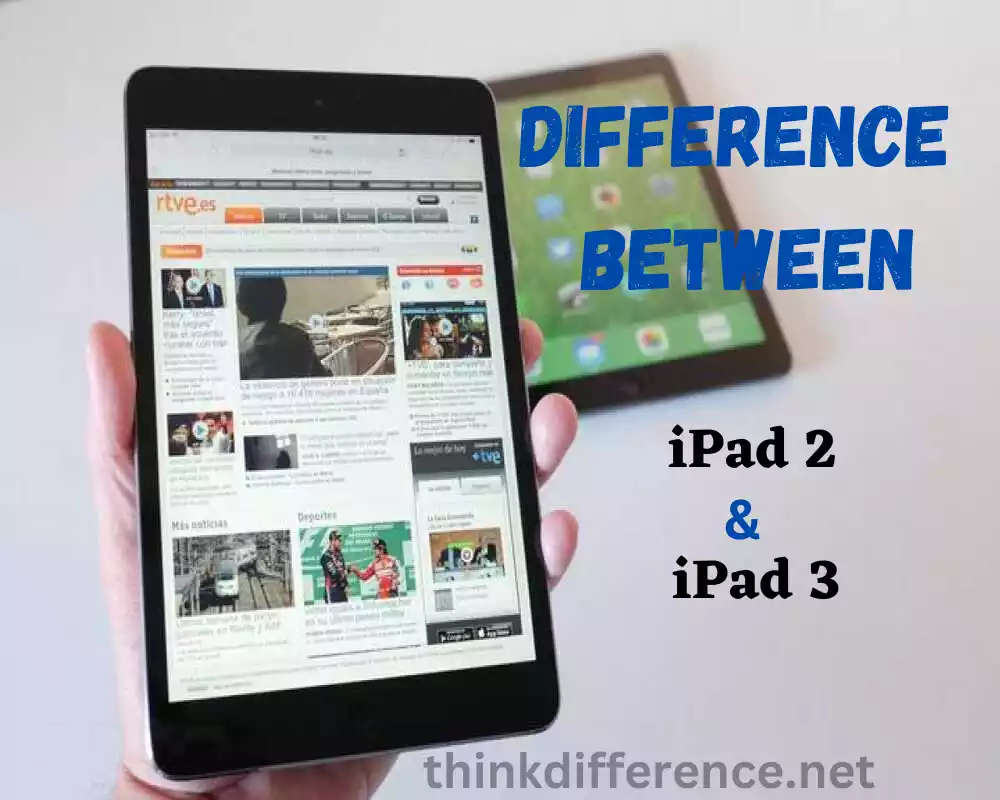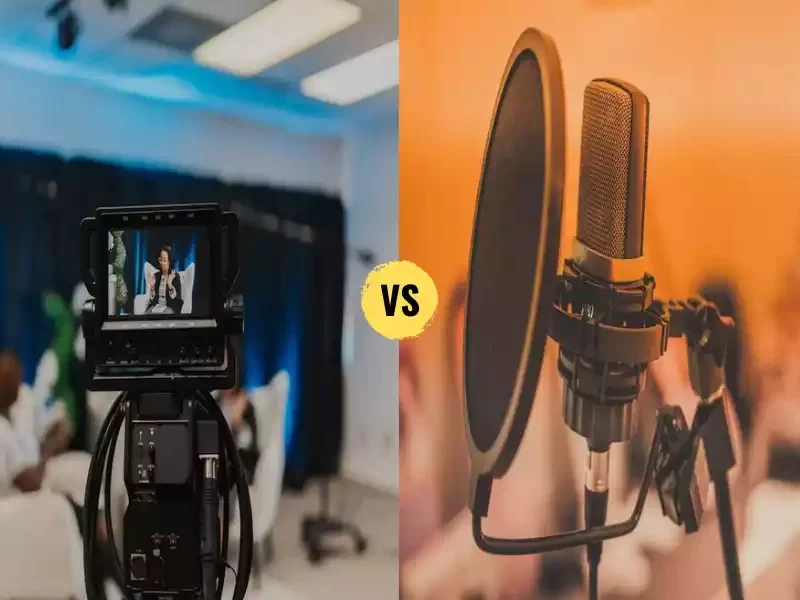The Short history of Apple iPad 2 and iPad 3
Apple unveiled their second generation tablet device, iPad 2, in March 2011. Compared with its predecessor, there were several notable updates. Particularly being thinner and lighter making it more comfortable to use and portable compared with its original version, enhanced dual core A5 chip performance capabilities as well as better application support.
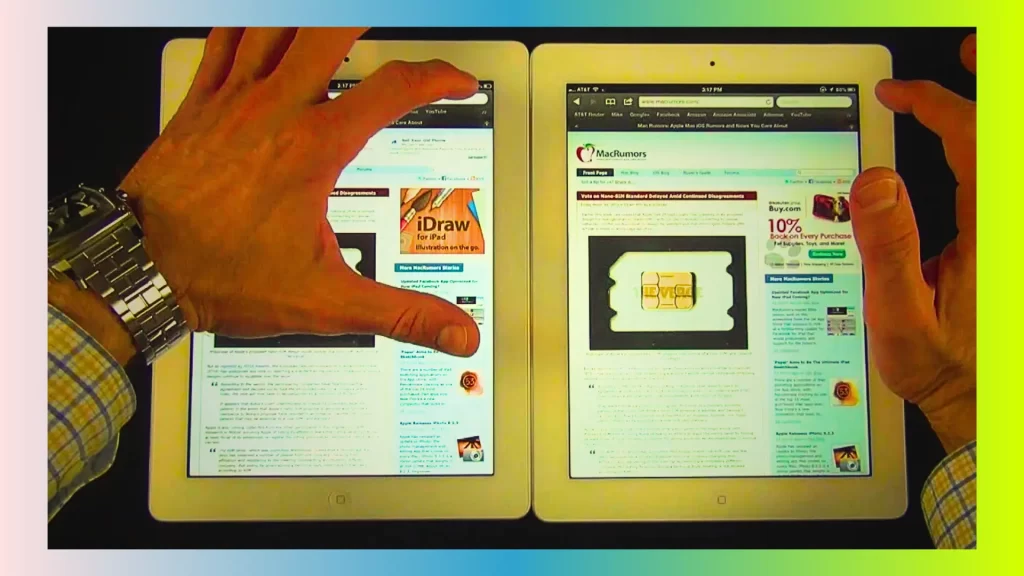
The iPad 2 displayed was identical in size but with smaller bezels than its predecessor; 1024×768 resolution remained consistent, providing users with access to video calls as well as more high definition photos and videos than before. Two cameras (VGA front facing camera and HD rear-facing) allowed for enhanced photography capabilities as well as video calls with improved video calls capabilities and higher image clarity for better photos/video captures.
iPad 2 introduced numerous groundbreaking features, such as its ability to be displayed externally using an HDMI adapter. AirPlay enabled wireless audio/video streaming. While magnetic Smart Cover accessory protected the screen while automatically sleeping or awakening your iPad when closed.
Apple released their iPad (3rd Generation), commonly referred to as iPad 3, in March 2012. Retina displays were an exciting upgrade on this model. These displays boast 2048×1536 resolution for sharp images with detailed scenes and greater experience. Many consumers took notice and purchased one.
The iPad 3 comes equipped with an upgraded A5X quad-core processor to deliver improved performance and graphics compared to past models, along with a 5-megapixel rear camera capable of recording 1080p HD videos, 4G LTE compatibility for faster internet speeds on compatible networks, as well as its signature 5-inch touch display.
The iPad 3 had similar design to its predecessors but featured improved display technology which increased thickness and weight. A front-facing camera was retained for FaceTime calls or video chats, along with being fitted for video chatting and FaceTime services.
Apple’s iPad 2 and iPad 3 tablets represented significant advances in its tablet line-up, offering improved performance, better display quality and expanded features.
Design and Display
Design and Display of Apple iPad 2 and iPad 3:
Apple iPad 2:
The iPad 2’s design stands out as being slim and sleek compared to that of its predecessor, making a statement of sorts about their future direction. Here are some key aspects that comprise its body:
- iPad 2 Dimensions: The iPad 2 stands at 9.50 (241.2)mm in height and width respectively and 8.8mm depth (0.34in). Wi-Fi models weigh about 1.33 pounds (601g) while Wi-Fi +3G models tipped the scales at approximately 1.35 pounds (613 grams), providing users with more comfort due to its reduced weight and thickness.
- Construction: The iPad 2 features an aluminum unibody construction for an elevated feel and its front panel features scratch-resistant glass while its back has either black or white aluminum finishes for an aesthetically pleasing finish.
- Display: The iPad 2 featured a 9.7″ LED-backlit LCD display with 1024 x 768 resolution and vibrant colors, excellent viewing angles and multitouch interface that allowed intuitive interaction. Its resolution wasn’t as sharp nor did it have as high of a pixel density than Retina screens, therefore it had its own advantages and drawbacks.
Apple iPad 3:
The iPad 3 offers an exciting new design and display. These can be summarized as follows:
- Dimensions and Weight: The iPad 3 had similar dimensions to its predecessor: 9.50 (241.2) inches in height and width and 0.37 (9.4mm). Wi-Fi models typically weighed approximately 1.44 pounds (652g); those equipped with Wi-Fi + Cellular services typically weighed roughly 1.46 pounds (662 g).
- Construction: The iPad 3 retained an aluminum unibody from its predecessor. Additionally, there was a scratch-resistant front panel and either black or white aluminum back plates available depending on which color option users opted for.
- Retina Display: One of the standout features of iPad 3 is its 9.7″ Retina Display, boasting 2048×1536 resolution with 264 PPI density (compared with 21 PPI density on iPad2). On contrast, its predecessor had lower PPI density that provided sharper graphics and text.
- Display Technology: The iPad 3 utilizes an LED-backlit IPS panel.
Performance and Processor
Apple iPad 2:
The iPad 2 represented an enormous improvement over its predecessor in terms of performance. Here are some key aspects that affected its functionality:
- Apple’s A5 Chip: The iPad 2 is powered by Apple’s dual core A5 chip, offering superior performance over the A4 chip from the original iPad. Specifically, this chip featured two Cortex A9 processors connected by PowerVR GPU SGX543MP2, giving faster processing speeds and better graphics capabilities.
- Faster and Smoother User Experience: The A5 processor’s dual core architecture combined with improved graphics performance created a smoother, more responsive experience that led to faster app launches, seamless system multitasking and overall improved performance.
- Enhanced Gaming and Graphics: The A5 chip on the iPad 2 offers enhanced gaming and graphics performance. It was capable of running graphic-intensive games and applications smoothly for improved visuals.
Apple iPad 3:
The iPad 3 marked an enormous leap forward in terms of performance and processing capability over its predecessor, so here is an overview of its abilities and specifications:
- A5X Upgrade Chip: The iPad 3 was equipped with an A5X upgrade chip, an improved version of A5 found in iPad 2. The A5X maintained dual-core Cortex-A9 processing but also added quad-core PowerVR SGX543MP4 graphics performance to ensure optimal use and user satisfaction.
- Improved CPU and GPU Performance: The A5X chip in the iPad 3 provides superior CPU and graphics performance when compared with its A5 counterpart found on iPad 2, providing improved CPU and graphics performance.
- Retina Screen Optimization: The iPad 3’s A5X processor was specifically tailored to handle its high-resolution Retina display, offering a smooth and fluid experience when rendering additional pixels onto its surface.
Both iPad 2 and 3 demonstrated significant performance advances over their predecessors. For instance, iPad 2’s A5 chip provided for faster responsiveness while iPad 3 A5X improved graphics and Retina Display support.
Camera and Multimedia
Camera and Multimedia capabilities of Apple iPad 2 and iPad 3:
Apple iPad 2:
The iPad 2 features an enhanced camera for increased multimedia capabilities over its predecessor. Here is an overview of these aspects and capabilities:
- Rear Camera: The iPad 2 featured a 5-megapixel, rear facing HD 720p Camera which allowed users to capture high-resolution pictures and videos at 5 MP resolution with ease. Autofocus was enabled as was an innovative tap-to focus feature which let them alter focus points by simply touching their screens.
- Front Camera: With iPad 2, FaceTime video calling is possible via FaceTime video calls or conference. Its lower-resolution front camera was specifically designed to accommodate video chats and self portraits.
- Video Recording: Video Recording on iPad 2’s Rear Camera Supported in HD Quality Users of an iPad 2 with its rear camera equipped to record videos can capture high definition 720p HD recordings to serve various purposes ranging from documenting special moments or videos for social media sharing purposes to documenting special memories, creating, editing or uploading their recordings directly into social networks such as Instagram.
- FaceTime: Apple’s FaceTime video calling application combined with iPad 2 front-facing cameras allowed for video calls with family, friends or coworkers over Wi-Fi or cellular networks. FaceTime was an innovative and effective means of visual communication across networks – particularly over Wi-Fi networks such as T-Mobile cellular.
- Multimedia Playback: iPad 2 offers users various multimedia playback capabilities through apps and services available in the App Store, such as high-definition videos, listening music, viewing pictures and accessing multimedia content.
Apple iPad 3:
The iPad 3 offers improved camera and multimedia features. Here is an overview of these enhancements:
- Upgraded Camera: iPad 3 comes equipped with a 5-megapixel rear camera equipped with advanced optics for optimal image quality and low light performance, outperforming that found on iPad 2. Its autofocus capabilities, facial detection features and video stabilization made this model highly attractive to buyers.
- Full HD Video Capture: The iPad 3’s rear camera supports 1080p HD video recording for clear and detailed high definition recording compared to that found on its predecessor, iPad 2. This camera makes recording HD footage possible at higher clarity levels than it could with iPad 2 cameras.
- Retina Display Elevates Multimedia Experience: The iPad 3 was one of the first devices to feature Retina displays, significantly elevating multimedia experience. Boasting an astounding PPI (pixel per inch density) rating of 264 pixels per inch (PPI), these high-resolution displays made images appear clear and detailed while giving multimedia content added visual punch.
- Multimedia Apps: The Apple iPad 2 or 3 App Store provides access to an expansive collection of multimedia-rich applications and services, such as music streaming services, photo-editing applications, gaming programs and other multimedia-rich programs for enhanced entertainment and creativity.
Both iPad 2 and 3 featured enhanced camera capabilities that enabled users to take photos, record videos, participate in video calls and enjoy multimedia content more readily. Retina Display on iPad 3 further improved visual quality for an engaging multimedia experience.
Connectivity and Network
Connectivity and Network options in Apple iPad 2 and iPad 3:
Apple iPad 2:
iPad 2 offers multiple connectivity features that provide seamless communication and access to the web, such as:
- Wi-Fi connectivity: iPad 2 offers Wi-Fi support. Users can connect wireless networks in order to gain internet access. Compatible with 802.11a/b/g/n standards, users are able to take advantage of its many compatible routers.
- Bluetooth: The iPad 2 features built-in Bluetooth, providing wireless connections with other Bluetooth-enabled products like speakers, headphones and keyboards for effortless file sharing and audio streaming. This enables simple file syncing via Wi-Fi networks or streaming audio media wirelessly over Bluetooth connections.
- 3G Cellular Connection: Some models of the iPad 2 offered 3G connectivity, enabling users to quickly connect with internet services or data connections while on the move. These models were compatible either with GSM or CDMA networks depending on your region and carrier.
- GPS: The iPad 2 3G with GPS chip enables location-based services and navigation, including mapping capabilities. Users could utilize apps and services based on location with this device.
Apple iPad 3:
The iPad 3 provides more connectivity options than its predecessor, boasting several key features designed to facilitate interoperability between it and other devices.
- Wi-Fi: Users could connect to available Wi-Fi networks for internet access and wireless communication.
- Bluetooth: The iPad 3 continued to feature built-in Bluetooth technology, allowing for wireless connections with compatible devices.
- 4G LTE Cellular Connectivity: The iPad 3 introduced 4G LTE (Long-Term Evolution) cellular connectivity options, offering faster data speeds for internet access on compatible networks. This allowed for significantly improved download and upload speeds compared to 3G connections.
- GPS: Similar to the iPad 2, the iPad 3 with 4G connectivity included a GPS chip for precise location tracking, navigation and access to location-based services.
Dependent upon your area and carrier support, specific networks and connectivity options for an iPad vary accordingly. A model should be chosen depending on its connectivity needs as well as available network options in that location.
Software and Operating System
Software and Operating System of Apple iPad 2 and iPad 3:
Apple iPad 2:
The iPad 2 launched with iOS 4, but has received various software upgrades throughout its lifespan. Below we outline its software and operating system configuration:
- iOS: Apple’s iPad 2 runs its proprietary iOS operating system and boasts an easy, user-friendly user experience that seamlessly integrated with other products and services from Apple.
- Software Updates for iPad 2s: Apple has recently issued updates for iOS 9.3.5 for the iPad 2, providing new features, bugfixes, security improvements and performance boost.
- App Store: The iPad 2 gives access to an App store which features various applications tailored specifically for its user base, providing entertainment, productivity, social networking and gaming apps as well as much more. Users could download these applications for their enjoyment or productivity purposes – downloadable apps could include anything from entertainment videos for YouTube and Netflix streaming to productivity tools that support business processes or games to be enjoyed with friends online!
- Integration with iCloud: The iPad 2 was compatible with Apple’s cloud storage service and synchronization iCloud, enabling users to share photos, videos and calendar entries across devices using its sync capabilities. iCloud allows for seamless multi-device synchronization for photos, videos and calendar events synchronization across all of Apple devices utilizing this synchronization service.
Apple iPad 3:
The iPad 3 originally shipped with iOS 5 has since been updated with later iOS versions such as 6. This document details both software and operating system for iPad 3:
- iOS: Apple’s iPad 3 was powered by its iOS, which offered a consistent user experience across devices from Apple. This particular version offered specific iPad-related features and enhancements.
- Updates to iPad 3 software: Through iOS 9.3.5, updates were regularly made that added new features, performance upgrades, bug fixes and security enhancements for iPad 3, assuring it remained up-to-date at all times.
- Retina Apps: When Apple first introduced the iPad 3, app developers quickly took full advantage of its high-resolution display to optimize their apps to take full advantage of this enhanced clarity and visuals in supported apps. As a result, app users noticed increased clarity and visual quality within each supported app that were supported.
- App Store and iCloud Integration: The iPad 3 offers access to an expansive App store offering. iPad-specific applications, seamlessly integrated with iCloud for access across devices.
Software updates and available features may depend on factors such as device model, hardware specifications and supported iOS versions.
Battery Life and Charging
Battery Life and Charging of Apple iPad 2 and iPad 3:
Apple iPad 2:
The iPad 2 featured a rechargeable lithium polymer battery which provided excellent battery life. Here is some more detail regarding its lifespan:
- Battery Life: The iPad 2 offers up to 10 hours of playback on a single charge, depending on usage habits such as web browsing and video playback. Actual usage times will differ based on factors like screen brightness, applications used and network connectivity.
- Charging: Apple provided the iPad 2 with a USB-to-30-pin Dock Connector and 10-watt adapter, so users could connect a cable directly into it and plug it in directly at an outlet. An alternative way of charging could also be connecting it via computer USB port.
Apple iPad 3:
The iPad 3’s battery life was comparable to that of its predecessor despite having higher-resolution Retina display, providing an overview of battery usage and charging timeframe. Here is more detail regarding battery usage and charging:
- Battery Life: The iPad 3 offers up to 10 hours of continuous usage on a single charging, comparable to that of the iPad 2. This estimate could differ based on individual settings and activities of each user.
- Charging: For charging their iPad 3, users require both a Lightning cable and 12-watt adapter, these components should then be attached together using an outlet plug-in cable and connected directly into an outlet via their respective Lightning plug connectors. They may also utilize their computer’s USB port in order to charge up their tablet as with an iPad 2.
Please keep in mind that battery life estimates may differ based on usage and settings, while charging times could also depend on factors like power source/cable as well as any ongoing processes running on your device.
Pricing and Availability
Pricing and Availability of Apple iPad 2 and iPad 3:
Apple iPad 2:
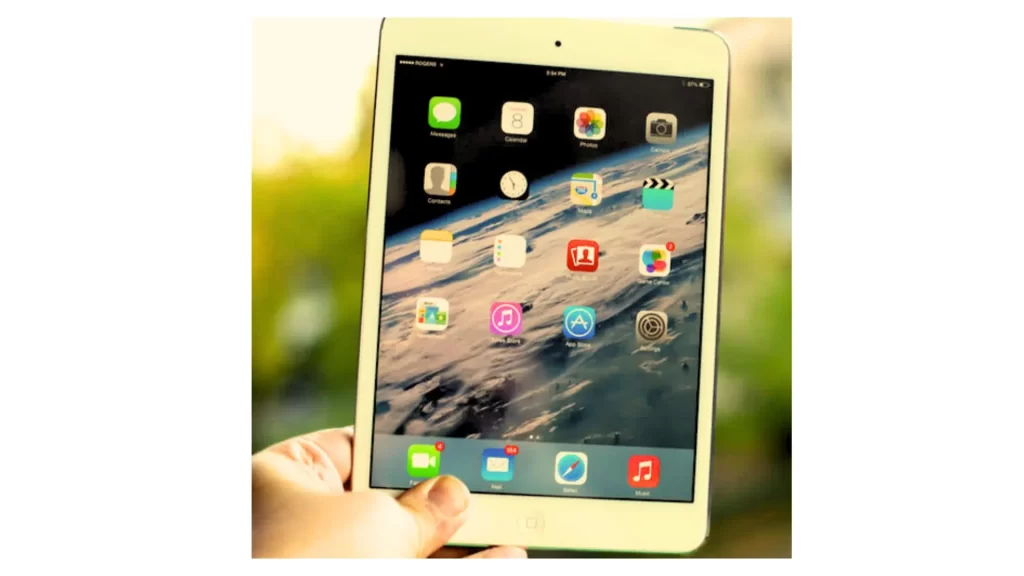
Since it first came out on March 11, 2011 Apple has made several adjustments to its storage and pricing options over time, which subsequently lead to discontinuing it as an entirely brand-new device as of September 2021 and only offering it through third party sellers as used or refurbished units.
The iPad 2 came at various price ranges depending on its storage capacity and connectivity features, with initial pricing for Wi-Fi-only models starting at $499 for 16GB models, $599 32GB versions, and $699 64GB ones respectively. Cellular versions, which add 3G connectivity into their package price usually cost more – usually an additional $130 premium is applied over and above Wi-Fi only prices.
Apple iPad 3:
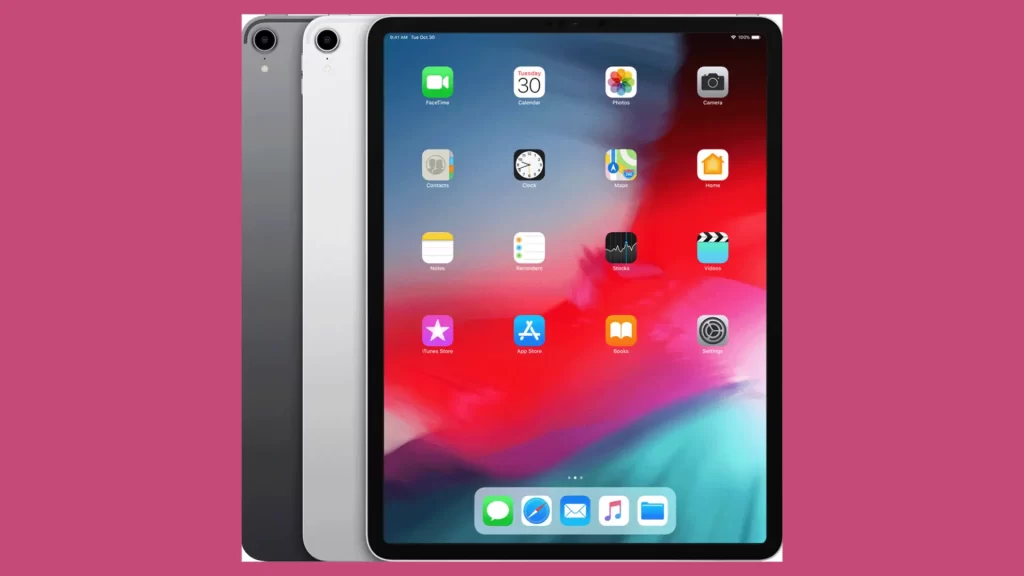
Apple released their iPad 3 or “the new iPad”, on 16 March 2012. As was done with its predecessor model (iPad 2), changes were made in pricing and storage configuration during its availability period.
Apple announced in September 2021 that they have discontinued selling iPad 3 devices directly, third-party sellers may still stock these refurbished or preowned units for purchase.
The iPad 3 offered various price points depending on its storage capacity and connectivity features, with starting prices for Wi-Fi-only models being $499 for 16GB models, $599 32GB versions and $699 64GB units – while Wi-Fi + Cellular versions were more costly at an extra $130 over their Wi-Fi-only counterparts.
Please be aware that the pricing data above reflects historical pricing trends and may change at any time, depending on where, when or under what market conditions a purchase takes place. For the latest update regarding iPad pricing and availability please reach out directly to authorized retailers or Apple.com.
Comparison table of Apple iPad 2 and iPad 3
Here’s a comparison table highlighting the key features of the Apple iPad 2 and iPad 3:
| Feature | Apple iPad 2 | Apple iPad 3 (The new iPad) |
|---|---|---|
| Design and Display | Old design with Retina display | Unique subtle display with pixel Retina |
| Dimensions | 9.50 inches (241.2 mm) x 7.31 inches (185.7 mm) x 0.34 inches (8.8 mm) | 9.50 inches (241.2 mm) x 7.31 inches (185.7 mm) x 0.37 inches (9.4 mm) |
| Weight | Wi-Fi: 1.33 pounds (601 grams) Wi-Fi + 3G: 1.35 pounds (613 grams) | Wi-Fi: 1.44 pounds (652 grams) Wi-Fi + Cellular: 1.46 pounds (662 grams) |
| Construction | Aluminum unibody, scratch-resistant glass front, aluminum back | Aluminum unibody, scratch-resistant glass front, aluminum back |
| Display | 9.7-inch LED-backlit IPS LCD | 9.7-inch Retina display (2048 x 1536 resolution) |
| Performance and Processor | 1 GHz dual-core 32-bit Cortex-A9 CPU | A5X SoC with a 1 GHz dual-core 32-bit Cortex-A9 CPU |
| Processor | Dual-core Apple A5 chip | Dual-core Apple A5X chip |
| RAM | 512MB | 1GB |
| Storage Options | 16GB, 32GB, 64GB | 16GB, 32GB, 64GB, 128GB |
| Camera and Multimedia | HD (720p) up to 30 frames per second with audio; still camera with 5x digital zoom | 5-megapixel camera, HD 1080p video recording |
| Rear Camera | 0.7-megapixel (720p HD video recording) | 5-megapixel iSight camera (1080p HD video recording) |
| Front Camera | VGA-quality photos and video recording | VGA-quality photos and video recording |
| Connectivity and Network | 3G device | 4G |
| Wi-Fi | Wi-Fi 802.11a/b/g/n | Wi-Fi 802.11a/b/g/n |
| Bluetooth | Bluetooth 2.1 + EDR | Bluetooth 4.0 |
| Cellular Connectivity | Optional 3G connectivity | Optional 4G LTE connectivity |
| GPS | Yes | Yes |
| Software and Operating System | iOS 4.3 | iOS 5.1 |
| Operating System | iOS 4 (upgradable to iOS 9.3.5) | iOS 5 (upgradable to iOS 9.3.5) |
| App Store | Access to the App Store | Access to the App Store |
| iCloud Integration | Yes | Yes |
| Battery Life and Charging | 10 hours, 10-watt power adapter, USB to 30-pin Dock Connector cable. | Up to 10 hours of video, 140 hours of audio playback, 12-watt power adapter, Lightning to USB cable. |
Pros and Cons of Apple iPad 2
Pros of Apple iPad 2:
- Design: The iPad 2 features an elegant yet portable form factor for ease of carrying.
- App Ecosystem: iPad 2 users enjoyed access to an expansive App Store that featured numerous iPad-specific applications.
- Performance: The iPad 2’s A5 chip delivers smooth and responsive performance for multimedia and gaming content creation as well as everyday tasks such as browsing.
- Battery Life: With up to 10 hours of run time per charge cycle, the iPad 2 enables extended use without frequent charging needs.
- Price: The iPad 2 offers more value for less money compared to its more recent siblings.
Cons of Apple iPad 2:
- Display: The iPad 2 offered a screen resolution of 1024×768 pixels, making its screen appear lower-resolution compared to later iPad versions with higher-resolution screens.
- Software Updates: Due to being an older model, your iPad 2 may not support all the latest features or applications.
- Camera Quality: While the iPad 2 offers a rear camera of 0.7 Megapixels, its performance may not meet user standards for high quality photos and videos.
- Storage Options: The iPad 2 lacks sufficient storage options compared to later models; its maximum capacity stands at 64GB; this may not suffice for users who possess large media libraries, or need extra room for apps and files.
- Connectivity: While the iPad 2 supports Wi-Fi connectivity, it lacks more advanced wireless standards and technologies that could facilitate new connections.
Apple discontinued the iPad 2 in 2011. Though still capable of performing many functions, its hardware and software may lag behind those found on more recent iPad models.
Pros and Cons of Apple iPad 3
Pros of Apple iPad 3:
- Retina Display: The iPad 3 was the first device to feature Retina displays, providing higher resolution images with more vibrant hues and detailed graphics.
- Performance: The iPad 3 features the A5X processor with enhanced graphics performance for an engaging multimedia and gaming experience. This ensures a more fluid multimedia and gaming experience on iPad.
- Camera Quality: The iPad 3 featured a 5-megapixel iSight, enabling users to take higher-resolution pictures and record HD videos at 1080p resolution. Features such as autofocus, facial detection and image stability made the experience all that much better for its users.
- App Ecosystem: Like previous iPad models, the iPad 3 comes equipped with access to an extensive App Store featuring various applications tailored specifically for its larger display size and enhanced capabilities.
- Battery Life: Offering up to 10 hours of playback time without needing to charge it often, the iPad 3 allows for extended usage without frequent recharging sessions.
Cons of Apple iPad 3:
- Weight and Thickness: The iPad 3 is slightly heavier and thicker than its predecessor, impacting both portability and user comfort while engaging in extended use sessions.
- Software Updates for an iPad 3: As an older model, this iPad may no longer support all the latest features or applications.
- Connectivity: While the iPad 3 did provide Wi-Fi connectivity, some advanced connectivity features found on later iPad models were lacking.
- Storage Options: Just like its predecessor, iPad 3 offers limited storage solutions – up to 128GB in maximum. Users with large media libraries or who require extra room for applications or files may find themselves lacking adequate capacity.
- Heat Issues: Users reported that their iPad 3 was significantly hotter than previous models, potentially having a negative effect on user experiences.
Apple discontinued the iPad 3 in 2012. Though still capable of performing many functions, its hardware and software may lag behind other recent iPad models.
Summary
The Apple iPad 2 and iPad 3 have both been remarkable devices in their own right. The iPad 2 offers an affordable option for those seeking reliable performance, while the iPad 3 brings cutting-edge features and an enhanced display experience with the Retina display. Budget and personal preferences will help determine which of these two options you decide upon.

